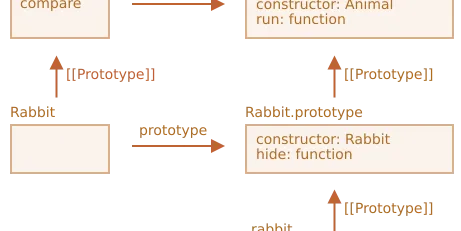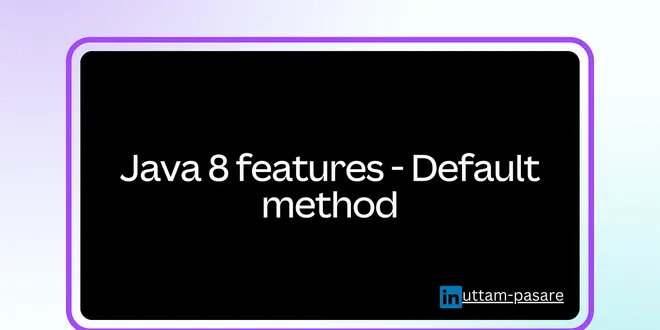Default&Static Methods in Interfaces
Default and static methods in interfaces, introduced in Java 8, enhance the flexibility and functionality of interface design. Default methods allow developers to provide a standard implementation for methods within an interface, ensuring backward compatibility without forcing existing classes to implement new methods. This feature is particularly useful in large codebases where interfaces are widely implemented. On the other hand, static methods in interfaces serve as utility functions that can be called without needing an instance of the implementing class. Together, these methods facilitate cleaner code and reduce redundancy, making Java interfaces more powerful and versatile.

Default Methods
Versions [{“Name”:“Java SE 8”,“GroupName”:null},{“Name”:“Java SE 9 (Early Access)”,“GroupName”:null}] Introduction Default Method introduced in Java 8, allows developers to add new methods to an inter...
📚 Read more at Essential Java🔎 Find similar documents

Accessing other interface methods within default method
You can as well access other interface methods from within your default method. public interface Summable { int getA(); int getB(); default int calculateSum() { return getA() + getB(); } } public clas...
📚 Read more at Essential Java🔎 Find similar documents

Default methods
Introduced in Java 8, default methods are a way of specifying an implementation inside an interface. This could be used to avoid the typical “Base” or “Abstract” class by providing a partial implement...
📚 Read more at Essential Java🔎 Find similar documents

Why and how you should use default methods in Java interfaces
Introduction Interfaces resemble a central concept in Java that enables a clear separation of definition and implementation. Before Java 8, interfaces could only have abstract methods, meaning a class...
📚 Read more at Javarevisited🔎 Find similar documents

Interfaces
Introduction An interface is a reference type, similar to a class, which can be declared by using interface keyword. Interfaces can contain only constants, method signatures, default methods, static m...
📚 Read more at Essential Java🔎 Find similar documents

Why use Default Methods
The simple answer is that it allows you to evolve an existing interface without breaking existing implementations. For example, you have Swim interface that you published 20 years ago. public interfac...
📚 Read more at Essential Java🔎 Find similar documents

Master Java Interfaces: Unleash the Secrets to Effective Design and Methodology
In Java, an interface acts like a blueprint for classes 🏗️. It defines a set of methods that a class must implement, essentially setting up a contract 📝. Here’s why interfaces are so useful: Contrac...
📚 Read more at Javarevisited🔎 Find similar documents

Basic usage of default methods
/** * Interface with default method */ public interface Printable { default void printString() { System.out.println( "default implementation" ); } } /** * Class which falls back to default implementat...
📚 Read more at Essential Java🔎 Find similar documents

Java 8’s Default Methods: Extending Interfaces with Ease
In the world of software development, maintaining backward compatibility is crucial. When new features are introduced, it’s important to ensure that existing code continues to work without any issues....
📚 Read more at JavaToDev🔎 Find similar documents

Static properties and methods
We can also assign a method to the class as a whole. Such methods are called static . In a class declaration, they are prepended by static keyword, like this: class User { static staticMethod() { aler...
📚 Read more at Javascript.info🔎 Find similar documents

Modifiers in Interfaces
The Oracle Java Style Guide states: Modifiers should not be written out when they are implicit. (See Modifiers in Oracle Official Code Standard for the context and a link to the actual Oracle document...
📚 Read more at Essential Java🔎 Find similar documents

Why do we need default method in Java 8 interface?
Hello readers,In general development practices an interface can be implemented by multiple interfaces where implementing classes will be forced to provide implementations for all the abstract methods ...
📚 Read more at Javarevisited🔎 Find similar documents

